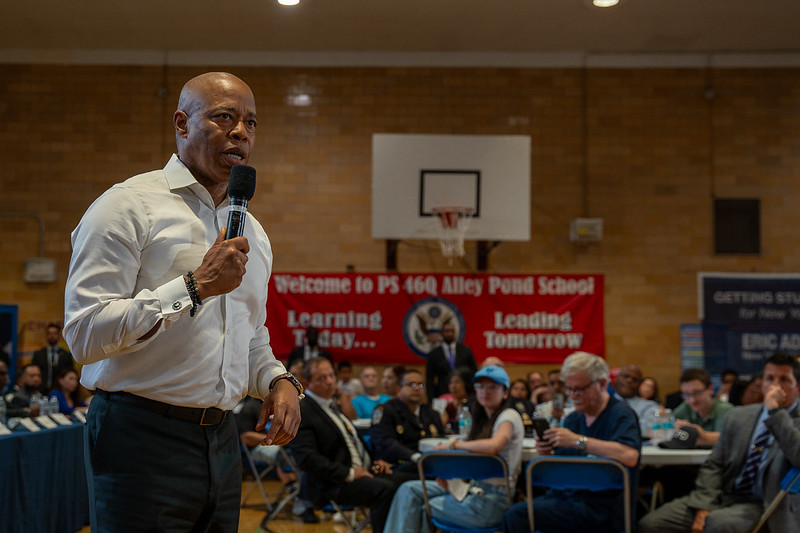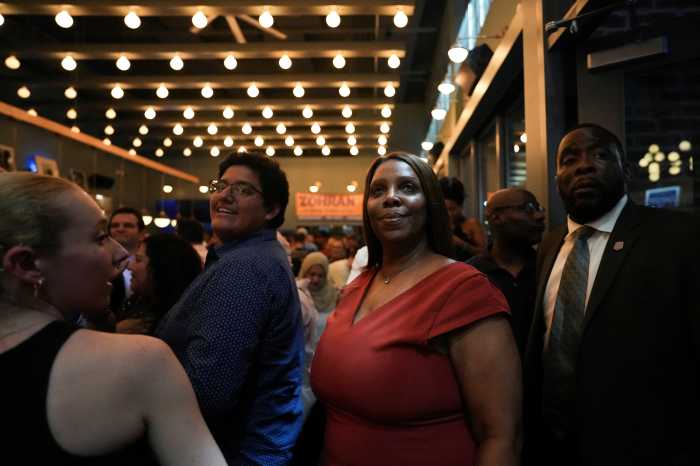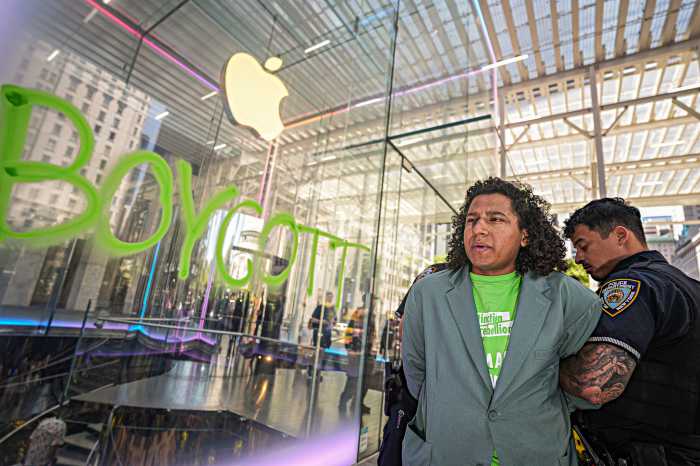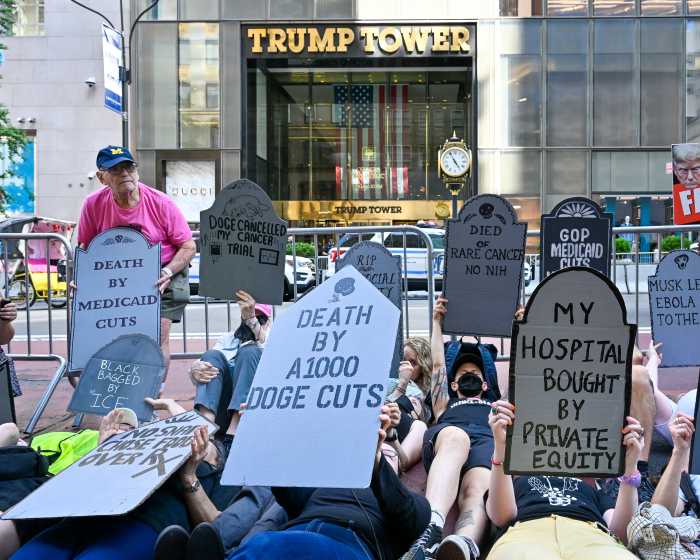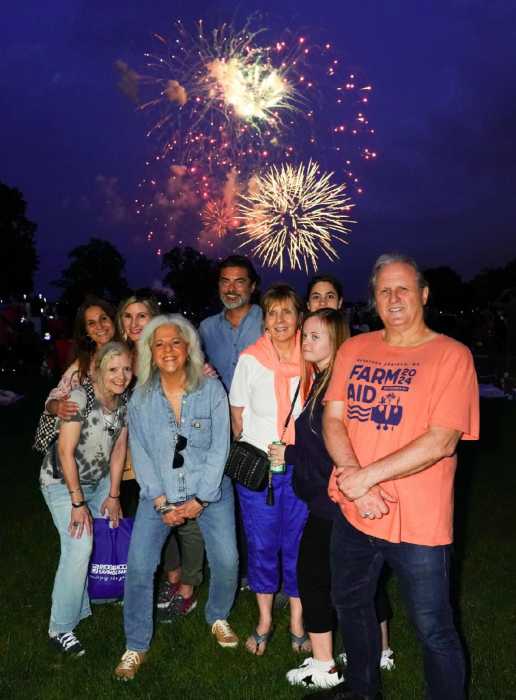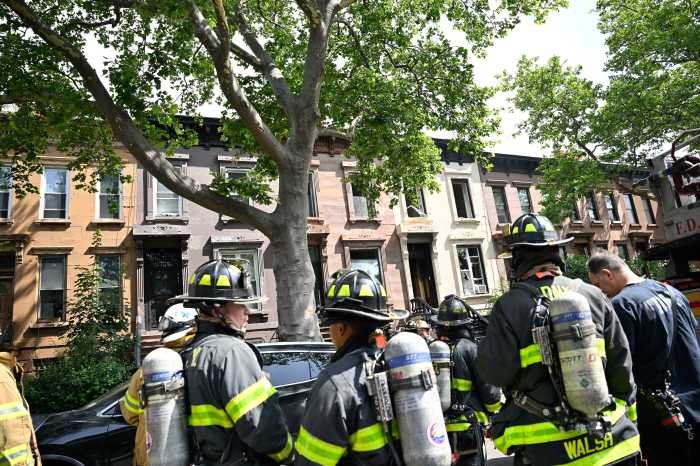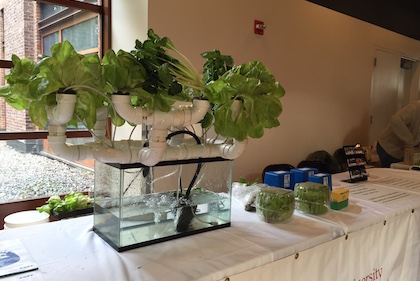
BY JACKSON CHEN | In an effort to foster the growth of urban agriculture in New York City, Manhattan Borough President Gale Brewer presided over a symposium on this unique green practice on October 14. Inside the American Museum of Natural History’s Powerhouse Room, members of a curious crowd numbering more than 50 approached table exhibits from experts and practitioners of urban agriculture.
Groups including the Cornell Cooperative Extension, New York Restoration Project, and Just Food were on hand to demonstrate how adaptive methods can be developed to grow food in unsuitable city environments. Urban farmers explained how they make use of spaces such as community gardens and rooftop farming to grow food amidst a concrete jungle.
Atop Cornell’s table, crisp lettuce and richly fragrant basil bloomed from a compact network of white plastic tubes above a bubbling water tank. Cornell’s Dr. Philson Warner explained that the tube system that constantly channeled a nutrient-rich solution into the greens was an example of hydroponics and has been used in many schools throughout the city. He urged visitors to press local officials to bring hydroponics to their neighborhood schools.
Throughout the day’s numerous panels — one of which the borough president moderated — most urban farmers cited financial feasibility as the biggest roadblock for them and agreed that there are opportunities for greater collaboration between organizations and assistance from the city.
“We struggle to make the financial numbers fit the way we want,” said Zach Pickens, a full-time urban farmer at Riverpark Farm at Alexandria Center on East 29th Street. “That’s the reality of what it’s like to grow in New York City.”
Pickens, who farms close to 100 varieties of crops in repurposed milk crates, said there are a lot of ideas the city could pursue to support urban farming. San Francisco, he noted, recently passed a bill that allowed tax abatements for land developments that allowed conversion of vacant lots into urban farms.
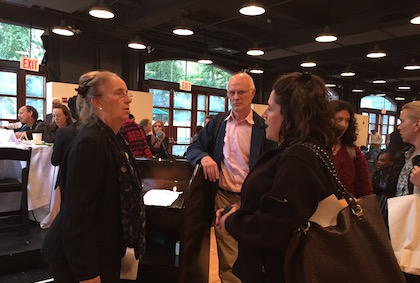
A report Brewer released in April titled “How Our Gardens Grow: Strategies for expanding urban agriculture” in April echoed many of the urban farmers’ concerns and recommended increased city government support for city farming. Drawing data from her report, the borough president said, “Fifty-seven garden administrators in Manhattan at schools, senior centers, NYCHA, community centers, and all of the gardeners cited resources or lack thereof as the number one challenge in the continued operation of gardens in New York City.”
Brewer, in April, announced that her office would contribute $1 million for urban farming projects in Manhattan schools. For less than $50,000, she estimated, a classroom could be “outfitted as a state-of-the-art hydroponics lab.”
Brewer said the applications process for receiving portions of the $1 million in funds would start in the coming weeks.
On top of expanding city efforts to foster urban agriculture, many organizations agreed that collaboration among them would help keep their individual prospects sustainable.
“The green world actually in New York City is very tightknit,” said Amanda Brown, New York Restoration Project’s director of community engagement. “If we don’t have something that you’re looking for, it’s more than likely that we can connect you with the person that can.”
Brown said that her organization’s main mission is to provide people with opportunities to create open space throughout the city. She added that she has frequently teamed up with Just Food, a volunteer operation that provides assistance to those trying to provide healthy, locally grown food.
As the event came to a close, the exchange of business cards made clear that the message of collaboration had sunk in.
“It’s our goal to ensure that every Manhattan resident has access to an urban garden program,” Brewer said. “But this is just the beginning of brining together the community of urban farmers in Manhattan.”



